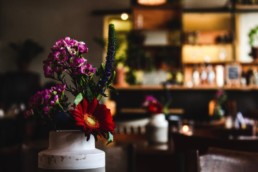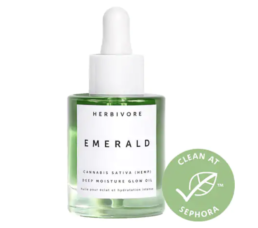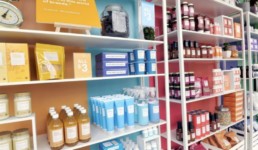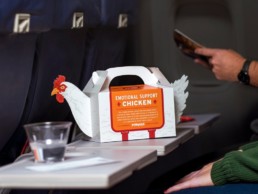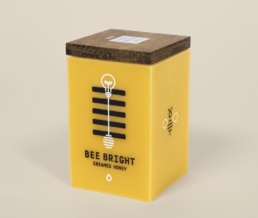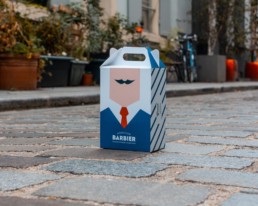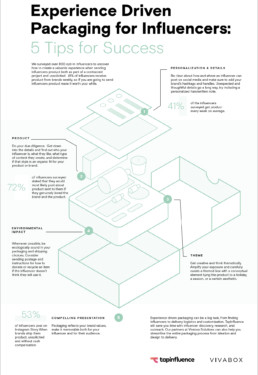6 Ways to Use Packaging Strategies in Marketing
Brand Packaging
The concept of using product packaging as an effective and memorable marketing tool has been around for over 150 years. For over a century, companies have utilized creative packaging strategies to ensure that their products resonate in the minds of consumers and stand out against the competition. From the iconic shape of a Coca-Cola bottle to popular cereal-box mascots Snap, Crackle, and Pop, using product packaging as a means to cement a brand identity in the collective conscious is nothing new. However, thanks to advances in technology, we are now able to incorporate product packaging strategies into marketing more seamlessly and effectively than ever before. Creative minds at companies across the United States work tirelessly to make more and more innovative packaging decisions so that their products will be the ones their consumer base remembers.
With the abundance of packaging options available to product manufacturers, it can be difficult to select one that stays on-brand, creates excitement and appeal, and helps distinguish the product from its peers at a single glance. While you want to form a lasting impression among your audience, you also want to make sure they understand what your company and its products stand for, so they can build loyalty to your brand. Here are seven of the most popular ways to use a strong product packaging strategy in your marketing campaign.
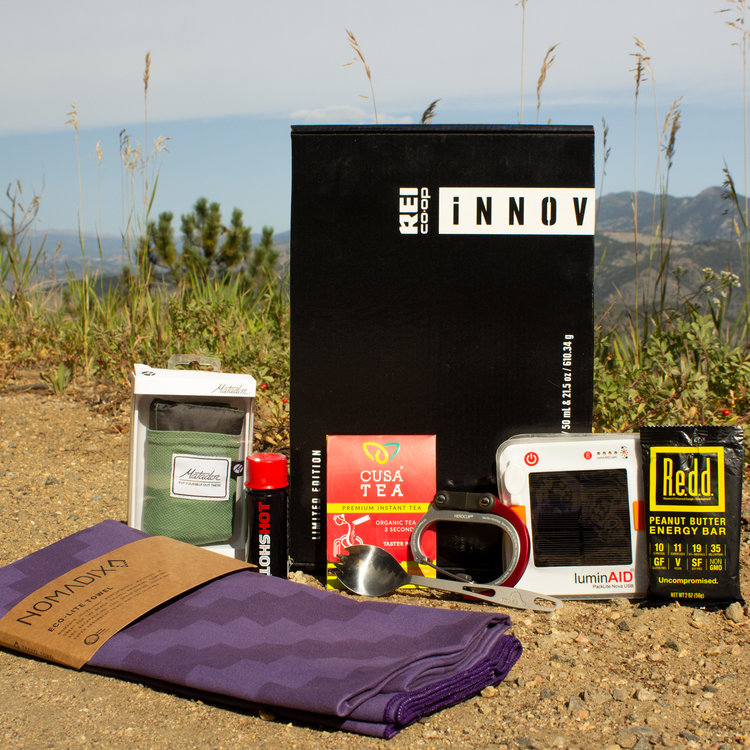
Keep it Green
As we continue to become more conscious of our collective carbon footprint, we are more interested in purchasing products with eco-friendly packaging. By choosing to package your product using biodegradable or reusable materials, you are letting your consumer base know that your company is deeply committed to preserving our environment. You can put your target audience’s mind at ease by using responsibly-sourced materials, such as plant-derived plastics, recycled cardboard, or natural fibers, in your product packaging, so that your consumer base feels good about supporting a company that cares about our planet.
Insta-Worthy Inspiration
We live in a society that loves to share photos of everyday life, and no platform makes it easier than Instagram! Your consumers are constantly on the lookout for “Insta-worthy” photos that will generate buzz on social media. Consider a packaging strategy that absolutely pops in a picture, whether your packaging is luxe, rustic, or just downright quirky. By packaging your product in a highly attractive way that looks amazing on Instagram, filter or no filter, you’re on your way to having it picked up by a brand influencer. This kind of exposure could skyrocket your business overnight!
Stay True to You
When consumers think of your brand and products, what adjective do you want them to use to describe you? The answer to that question can go a long way toward deciding on a strong packaging strategy. It’s important to let your choices be guided by your brand values, not the other way around. For instance, a family-owned company that makes and sells artisanal cheese probably will want their products to evoke imagery of tradition, legacy, and old-fashioned quality, while a company that manufactures high-end cosmetics may opt for ultra-luxe packaging that puts consumers in mind of glamour and celebrity status. No matter what type of product you sell, it is always important to make sure your packaging is in line with the rest of your branding.
Make it Limited
One sure way to generate excitement is to release limited edition products complete with special packaging. Perhaps you want to market goods that are only seasonally available, such as special coffee blends or candle scents, using holiday-themed packaging. Or maybe you have created anniversary-edition packaging to commemorate the number of years your company has been in business. No matter the occasion, a packaging strategy based on a timely or seasonal offering creates a sense of urgency that drives consumers to buy the items you are selling before they run out.

Send a Message
Does your company place value on being an ethical and responsible voice for certain political and social issues faced by members of you target audience faces? A number of companies choose to use their packaging as a platform for sending messages that correspond with the core beliefs of their organization. For instance, if your company is committed to promoting children’s literacy, you may want to use a packaging strategy that incorporates famous quotes from beloved children’s books. Similarly, if you own a business that strongly supports animal rights , you may wish to include messages that echo your commitment to the cause on all of your product packaging. You can use your products to educate your consumer base, which can make a huge impact on our society!
Simplify…and Save!
Sometimes the most effective packaging is none at all! If you are trying to convey a brand image of simplicity, it may be best to employ a minimalist packaging strategy. If, for example, you wish to reduce the wasted space created by standard food item packaging, such as a box or can, perhaps try to use a slimmer, more streamlined container to stand out. Not only does a packaging decision like this help distinguish a particular brand from the rest of the competition, but it also can help a company save money by cutting down on packaging costs. Additionally, a simplified container can add value for consumers who wish to cut down on unnecessary bulk for easier storage and disposal. By keeping it simple and designing product packaging that carries a lower profile than that of your competitors, you’re actually helping it stand out from the rest of the competition!
When choosing the right packaging strategy for your product, keep in mind that, first and foremost, you must choose something that will resonate with your target audience and cause them to select your brand over others on the market. The more you know about your chief consumers, the more you will be able to make informed packaging decisions based on what matters most to them, By sticking to your core brand values and knowing your audience, you can effectively market yourself using distinctive packaging that sets you apart from the crowd!

Looking for a solution? We can help.
Headquarters
9211 Corporate Blvd Ste 110
Rockville MD 20850
Satellite Offices
Dallas, TX
Paris, France
San Francisco, CA
Scottsdale, AZ
info@vivaboxsolutions.com
Phone
800-529-1988
Minimum Order Quantities:
RPET Totes: 3,000
Kraft Shoppers: 5,000
Rigid Boxes: 3,000
Folding Cartons: 5,000
Augmented Reality (AR) 'Smart Packaging' Opens Up New Packaging Potential
Brand Packaging
We talk a lot about how packaging is one of the few tangible relationships a brand has with the consumer, as well as its importance to a brand’s narrative and loyalty. This recognition is based on the density of smartphone ownership, sales trends, and overall connectivity.
During a time when everything is mobile (yet everything still has a barcode), augmented reality (AR) packaging, aka digital or smart packaging, is here. It’s the next frontier in experiential branding because it offers enormous untapped potential for retailers and brands to revolutionize packaging and the way they connect and engage with consumers today.
At a time when marketing departments are spending more on digital advertising than ever before–and users are connecting to the web through mobile more than ever before–brands are sitting on an unrealized mobile marketing channel that’s been dormant in every supermarket, home, office, and shopping destination until recently.
AR packaging has become a new way of expanding a brand’s narrative–to offer background information in clever ways and to offer consumers a way to attach to the brand emotionally. It provides another innovative dimension to packaging that gives consumers a surprising experience.
A great example of smart packaging can be seen with Anheuser-Busch, which created a collectible Budweiser cup that lit up in response to crowd noise during the 2018 FIFA World Cup. There was a circuitry built into the beverage packaging that responded to environmental sound with LEDs that flashed, which visually riled up the crowd’s energy during games.
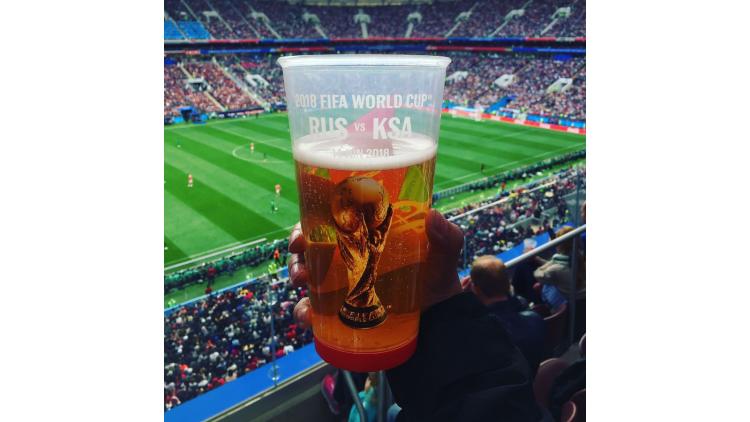
Packaging Digest (Aug. 29, 2018)
Another interesting, smart packaging design comes with “auto-replenish,” which was created by Amazon to support products that are regularly used and need regular refills or replacement. Products can use smart packaging to notify consumers when it is time to reorder so they can request more through their Dash Replenishment Services (DRS).
Researcher Pan Demetrakakes explains, “So far, smart packaging has been thought of mostly in terms of connection to ‘passive’ online information, like recipes or discount offers. However, it has the capability to unlock the full interactive potential of the internet.”
In light of such research, founder of London-based branding agency SharpEnd, Cameron Worth talks about the potential for smart packaging to integrate with the Internet of Things (IoT): “Traditionally, there has been no way to close the gap between the brand and consumer via the product, but now with the IoT, we can use smart packaging to bring brands directly into contact with individual consumers and use this opportunity to build brands post-purchase.”
At Vivabox, we are actively building event and influencer kit experiences with AR and thinking about how trial and loyalty consumer journeys can be impacted with smart packaging.
Although there is a practicality in association with the Internet and ordering, brands also have the opportunity to develop deeper brand connections through stories. For example, pasta sauce brand Francesco Rinaldi recently updated their brand with a smart packaging feature that enabled consumers to interact with brand spokesperson Mrs. Rinaldi. This digital approach allows consumers to pick up the jar from the shelf, scan it, and hear the story of the product directly from the brand “mascot.”

Packaging Digest, Dec 13, 2018
These variations of smart packaging also offer brands some essential opportunities/thought starters:
-
Imagine picking up a trial item, turning on your AR to hear from the perfumer who made the product waxing poetic about the formula and the ingredient origins Star Trek style in the aisle of the store or pop-up.
-
Extend the available real estate for product messaging and promotional offers.
-
Increase brand engagement especially via social sharing while this is still relatively new.
-
Serve contextually relevant information at the point of purchase and consumption.
-
It also drives better consumer data by offering real-time data analytics on a serialized basis, creates a better understanding of users, and helps deliver more measurable results and value-added benefits to customers.
Vivabox can help you with better packaging and connect you with AR experiences to help take your brand story to the next level of digital packaging sophistication.
Looking for a solution? We can help.
Headquarters
9211 Corporate Blvd Ste 110
Rockville MD 20850
Satellite Offices
Dallas, TX
Paris, France
San Francisco, CA
Scottsdale, AZ
info@vivaboxsolutions.com
Phone
800-529-1988
Minimum Order Quantities:
RPET Totes: 3,000
Kraft Shoppers: 5,000
Rigid Boxes: 3,000
Folding Cartons: 5,000
How Packaging and Branding are Bringing CBD Mainstream
Brand Packaging
Research that addresses the benefits of cannabinoids (CBD) on the human body is becoming more recognized and accepted, and the awareness of wellness, skin care, and CBD is part of that growing recognition. PSA: cannabinoids and get-you-high marijuana are not the same things. CBD does not contain the ingredient that gets you high (THC).
There is still a ways to go, as the FDA continues to move slowly in its endorsements for cannabinoids and it is not yet legal in several states, but there are many companies, startup and established alike, currently embracing–within legal parameters–CBD in beauty and beverage products, especially as state and federal laws become more inclusive of CBD products.
As the public becomes more aware and accepting of the benefits of CBD in beauty products (and beyond), branding and packaging will be a key step to consumer trust and confidence, especially in these transitional stages.
More than that, though, new entrepreneurs and brands are doing away with marijuana-leaf logos and demystifying the dosing and buying of CBD by providing education and premium packaging designed to increase both understanding and acceptance of these products and this ingredient.
First, a Quick Science Lesson
In a recent CBD for Life article, they explain that scientific researchers have shown undisputable CBD connections beneficial to the human body. “It is because of how CBD communicates with the endocannabinoid system,” the article said. The human body has a system of endocannabinoid neurotransmitters, or receptors, and “These receptors are spread throughout the body, but are observed mostly in the skin.”
What has been scientifically proven is that the human body has a natural endocannabinoid system, which means there is a chain of receptors that connect every part of the human body, from the tissues–to the nerves–to the mind. Phytocannabinoids are produced in nature (the marijuana plant system, for example) and can be consumed by the human body to create a relationship of benefits. Although cannabinoid products can be found in other types of plants, like echinacea, liverwort, pepper, and even chocolate, CBD in phytocannabinoids just so happens to have the most potent and beneficial effects for the human body.
CBD and the Beauty Industry
According to a January 2019 report by Beauty Packaging, “Cannabis is known for stress-reducing and pain-relieving benefits. Use of CBD products [for skin] can reduce redness, irritation and even acne.”
Neiman Marcus recently introduced their CBD beauty line and Kim D’Angelo, beauty buyer at Neiman Marcus, recently explained that
“Cannabis beauty brands are becoming increasingly popular and CBD products are the next big thing in beauty.” Such products are comparably priced to other luxury brands like Sephora, L’Oréal, and Estée Lauder.

https://www.neimanmarcus.com/p/ildi-pekar-sleeping-mask-infused-with-cbd-oil-1-1-oz-30-ml-prod219110020
Neiman Marcus I-Pekar CBD Oil Skin Care
Another well-established company, Barneys New York (as well as their locations in Chicago, Beverly Hills, and Las Vegas), has also released a new CBD skin care line “Lab to Beauty.” They promote their products by touting “the pure potency of plants, combined with the healing effects of CBD.”

https://www.barneys.com/product/lab-to-beauty-the-cbd-drops-506111933.html
Barneys New York “Lab to Beauty”
More so, independent startups like CBD for Life and Fleur Marché are offering quality products and walking consumers through the process if they are unsure of their state’s legal boundaries. Furthermore, their packaging starts to play more on the natural, sustainable elements of cannabinoids rather than the more stereotypically rebellious aspects.
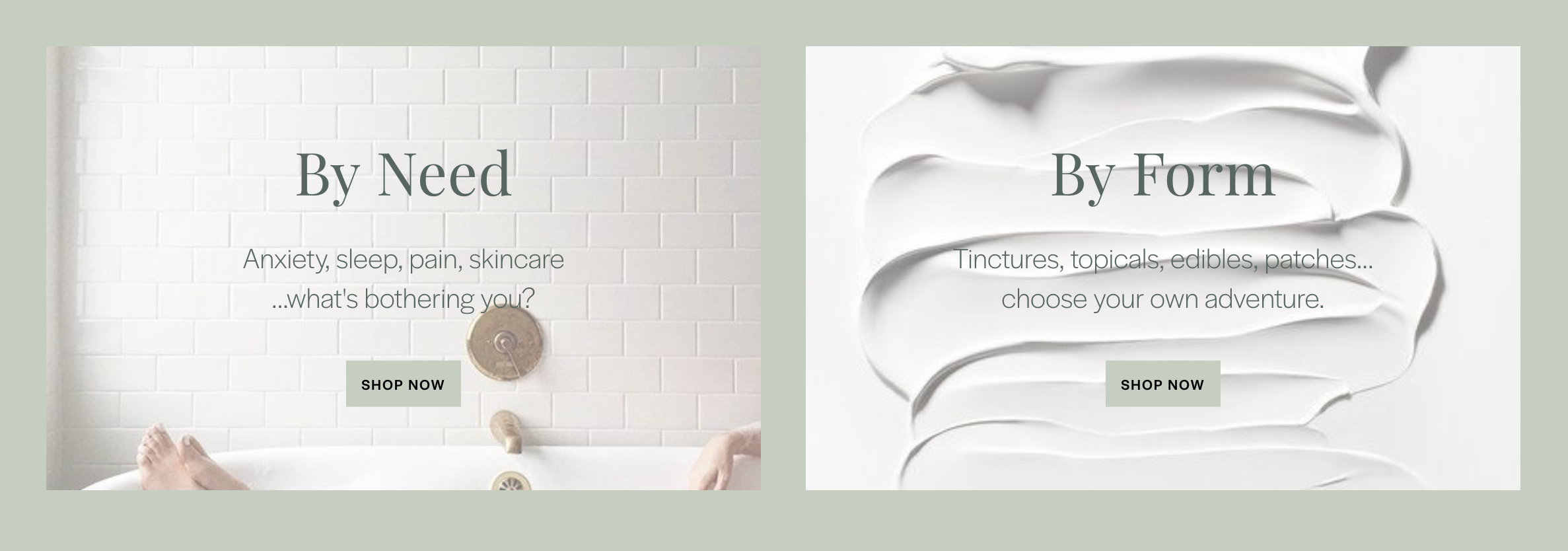
https://fleurmarche.com/
Fleur Marché
Of course, because of current restrictions, they are only sold in locations where states have already legalized medicinal and/or recreational use as well. Although this is an initial hindrance for the mass consumer, the trend shows CBD and other cannabinoid products are becoming more accepted and could soon be in a store near you, or at least online ordering without repercussions. It is the subtle and medicinal message that continuously needs more strategic attention.
Why Packaging and Branding Matters
Now that we have addressed scientific and legal issues (phew!), let’s get down to how packaging becomes the perfect bridge between consumer skepticism and confidence, as well as overcoming cannabis industry stigma.
Most consumers are still unaware of the differences between hemp, THC, and CBD–and the image of legalization is a narrow one, which depicts a “4:20” recreational lifestyle or, say, images of Shaggy from Scooby Doo: “Zoinks!” This is an unfair representation, and many consumers are starting to understand this. But the packaging and branding industries can easily help alleviate this. Here are a few examples:
First, Vivabox has been addressing the importance of sustainability with our clients, and in an industry like cannabinoids, it is a primary concern. As organic products take a lead in more sustainable packaging (or at least they should), the CBD industry tries to adapt similar branding and packaging objectives: from the Earth, for the body. These connections are beautifully symbiotic.
For those consumers who are already on board with CBD (or any other cannabinoid product), it is an added perk: brown glass bottles, eco-alternatives to bubble wrap–like green wrap or corrugated bubble wrap–and packaging made of 100% recycled boxes, soy ink, and recycled filler/packaging paper. And for those who require more subtle branding and packaging, leave off the marijuana leaf in the design, or at least downplay it.
Consumers are savvy and they don’t want to be reminded of the stigmatic images (even if they rationally know much of it is incorrect). If consumers are dropping premium prices for premium CBD products, they also (if only subconsciously) require smart and subtle branding and packaging. It is a tightrope walk these days, but packaging can also create change in perspective and offer consumer confidence.
Here are a few examples of how Sephora (current client) is creating a balanced brand and packaging campaign:
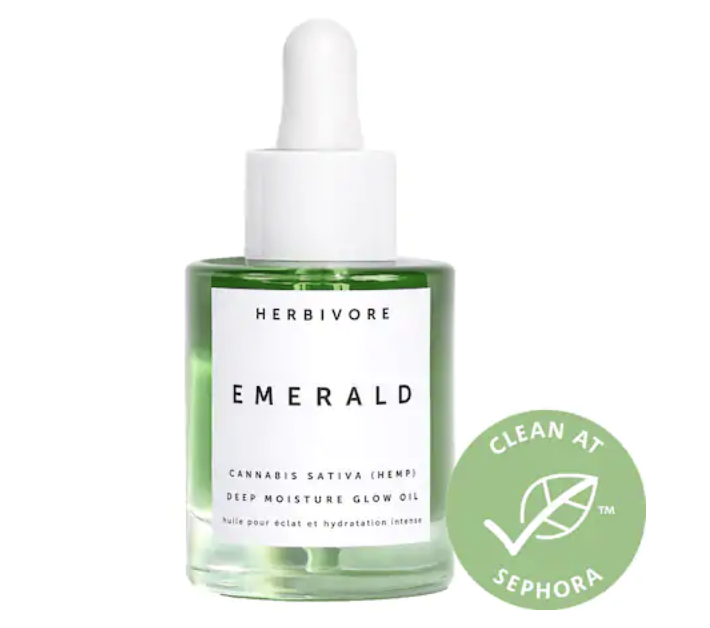
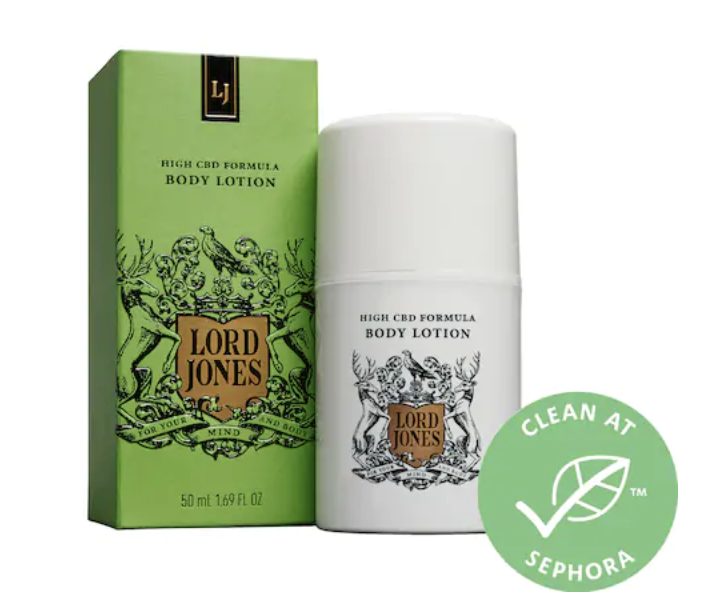



https://www.sephora.com/search?keyword=cbd
Sephora: Herbivore Organic, Lord Jones, Kiehl’s, Josie Maran, and Milk Makeup CBD products
For instance, although there are marijuana references, “Kush” and “Dope,” for Milk and Josie Maran primary packaging, it is not at the expense of good branding and messaging. More so, the Kiehl’s and Herbivore pale green glass (an organic go-to) and high-end typography and packaging suggest they are in on the fun of being able to publicly talk about “weed” while not forsaking their commitment to high quality products.
The rhetorical strategy here does not shy away from its contents but rather marks it acceptable by way of common packaging found in similar non-CBD beauty products. As for the following packing for Vertly, apothecary and luxury elements are used to validate CBD’s confirmed medical and beauty benefits.
The conversation is inherently, “Why would Sephora, Barney’s, Neiman Marcus support this if it wasn’t true?” And the perk? Consumers can buy these and not come off as a “pothead,” and let’s face it: that is what many mainstream consumers fear. This transition from stigma to benefit is all in the packaging. Period.

http://nymag.com/strategist/article/best-cbd-skincare-products.html
Yes, informing the general public of the differences between TCH, CBD, and Hemp are important. They have very different purposes, but CBD has the opportunity to brand itself as something outside of the “4:20” culture. The CBD PR movement all starts with education, but really, it is best promoted with packaging and branding first. These high-end companies have figured it out: the medicinal benefits have become better received in many states, and are recognized as having premium perks for those who can afford it. Packaging that reinforces positive branding while eliminating harmful cliches is possibly the most important first step.
Smart branding and packaging (which is one and the same these days) is the best move forward for beneficial products which were once stigmatized, but no longer are. At Vivabox, we’d like to see a multi-branded CBD ‘starter’ kit with great branding, education, trial, and social media hooks. It’s exciting to see packaging as much more than a box. To us, it’s where the story starts.
Looking for a solution? We can help.
Headquarters
9211 Corporate Blvd Ste 110
Rockville MD 20850
Satellite Offices
Dallas, TX
Paris, France
San Francisco, CA
Scottsdale, AZ
info@vivaboxsolutions.com
Phone
800-529-1988
Minimum Order Quantities:
RPET Totes: 3,000
Kraft Shoppers: 5,000
Rigid Boxes: 3,000
Folding Cartons: 5,000
5 Retail Trends You Can Actually Activate for 2019
Brand Packaging
In 2019, the market will be defined by emerging technologies that change the way consumers interact with their favorite brands, a more tangible experience (online and on-site), and the emergence of new types of e-commerce.
Let’s take a look at five important trends that will shape retail in 2019 and forward.
1. Brand as Culture
Millennials’ changing preferences and attitudes regarding corporate responsibility and social consciousness have already impacted how retail brands present and position themselves. The trend has resulted in brands equating their internal culture with their exterior identity. Companies are increasingly engaging consumers outside of traditional shopping parameters and becoming cultural figures.
What ideas can you bring to market if you think of physical intercepts as a cultural representation of the connection you have with your consumers vs “buy it now”
Companies can embrace physical and ideological experiences that immerse customers into a full buyer’s cycle. The days of clever campaigns being enough are pretty much done. Companies will have to consider the image their brand conveys to the world in ethos, all senses, and in packaging (which are blending more than ever).
2. Experiential Retail
The old model of in-store and online retail strictly focused on products being sold. However, consumers have been moving away from strictly shopping for products and are now searching for a more engaging experience. The trend has been primarily driven by millennials and their preference for experiences over things.
Consumers are shopping more with their emotions rather than their wallets. Note, we said shopping. Physically walking into a store should be an escape, a chance to browse, a chance to meander. Buying, on the other hand, is assumed to be pretty quick and easy — a few clicks, done.
Re-designed signage and remodeling a store aren’t enough, both the stores and the brands now realize they can only survive if they create something worth visiting.
For example, stores like Sephora have rethought their retail experiences by combining traditional elements, trial, loyalty programs, and their mobile apps pretty seamlessly. (they’re a client, we’re biased)
Samsung unveiled a $43 million “pop-up” that features its products but doesn’t have any for sale.
The emergence of virtual reality, augmented reality, and improved mobile connectivity have added new layers of experience to add to their retail models.
Packaging for online and on-site stores has also emerged as an essential experiential touchpoint. Gone are the days of brown boxes with packaging tape, bubble wrap, and packing peanuts as “the last mile experience.“
Consumers want their packaging to mean something more. To mean something, actually. Colors, fonts, textures, and materials are all a selling point, as well as its ability to be recycled or repurposed. It’s almost as important as the product it holds.
3. Faster Shipping
E-commerce continues its march toward becoming the most popular purchasing medium. In September 2018 the sector expanded by 11.4%. Today, most major brands have an online presence, and they all offer comparable prices. Even stores like Amazon and Walmart have become largely competitive, so retailers seeking to differentiate themselves have had to find other ways to deliver value.
A current Marketing Charts study found that the amount of time people are willing to wait for free shipping has dropped from 5.5 days in 2012 to 4.5 days on average. Programs like Amazon Prime have made two-day shipping the standard, so cutting down on shipping time is vital for any e-commerce business looking to stay on top.
In-store pick-up, new delivery systems, special access, or making the package worth waiting for are all ways to combat warp speed expectations.
4. Subscription E-Commerce
Today’s buyers are also increasingly seeking shopping/buying that is tailored to their preferences and delivered directly to their doors. These trends have resulted in the emergence of subscription e-commerce, which means businesses curate products and ship them to customers with regularity.
According to a recent report by McKinsey & Company, 15% of online consumers signed up for subscription services in 2017, and that trend is only growing.
That said, marketing and maintaining a subscription base can be expensive for some brands and retailers. This is an area where a well-defined test is a must.
5. Multi-Channel, aka Omnichannel, aka The Way Consumers Shop & Buy Naturally in 2019
Even though many brick-and-mortar stores are closing, they still play a significant role in the purchase process. The difference is that it has transitioned from the primary point of sales to being part of a broader retail strategy. Instead of a single touchpoint for consumers, the growing trend in retail has been to expand how brands use brick-and-mortar to catch leads and convert them.
How can retailers maintain omnichannel active and keep personalization and fulfillment streamlined?
This calls for deep integration across all channels, including websites, marketplaces, social media, and brick-and-mortar. It’s time to get departments really working together, and sharing data, and thinking differently about sales attribution. The consumer is already fluid, but most retailers and brands are less so.
Multi-channel is vital for captivating consumers and keeping them engaged from first impressions to the point of sale. Focusing on providing excellent experiences across channels is the best way to stay vital in the upcoming years. Oh how we love a good CX strategy.
The latest trends in retail are driven by a combination of a changing technological landscape and the shifting preferences of consumers created by millennials. By embracing these trends and preparing for them, retailers can look to 2019 as another favorable opportunity to grow.
Looking for a solution? We can help.
Headquarters
9211 Corporate Blvd Ste 110
Rockville MD 20850
Satellite Offices
Dallas, TX
Paris, France
San Francisco, CA
Scottsdale, AZ
info@vivaboxsolutions.com
Phone
800-529-1988
Minimum Order Quantities:
RPET Totes: 3,000
Kraft Shoppers: 5,000
Rigid Boxes: 3,000
Folding Cartons: 5,000
Know Your Customer: Developing Personas for Packaging Strategy
Brand Packaging
The key to a successful marketing or branding campaign starts with understanding your target audience, and, a well-defined audience begins with developing buyer personas. In the age of IG and e-commerce, your primary and secondary packaging design should most definitely be part of your CX process and strategy.
A buyer persona is defined as a well-developed character created from customer trends and demands. Most companies attract more than one group of people, so they find it beneficial to develop three-dimensional personalities with names, ages, occupations, certain social statuses, education levels, aesthetic principles, family size, buying trends, and more. Brands interact with people, not cardboard cutouts, so developing these personas are helpful to create a range of insights.
Simply put, developing personas is important, and it is incredible what insights surface when companies take the time to get to know them.
Personas and Packaging
When thinking about brand development and the multiple personas you must nurture, packaging becomes a primary touchpoint. Outside of the actual product, the package is the most tangible branding tool a business has, and these personalities can have a significant impact on your design strategy.
For example, if you’re targeting an older persona, you may want to work with more traditional packaging or play with nostalgic designs that tug at their heartstrings or work with packaging that can be repurposed. You also want to assess your font size and contrast and including smart and obvious ways to open the package for hands that have lost some dexterity.
If you’re going to attract a millennial persona, you may want to develop a more sustainable solution that works with contemporary or forward-looking design and trends. And be sure it has an element of IG-bait.
Packaging the same product in different ways can be a great way to embrace all of your personas without exclusion.
The Power of Personas
Once your business has developed well-rounded personas, what can you do with them? You can do anything! Hopefully, you use them to make every brand decision. Considering that it is the consumer that creates demand, it is essential that all marketing and branding strategies keep all personas in the forefront of every decision.
Consulting personas for insights into what your audience will identify with and what will capture their interest is essential to determining the shape, font, color, textures, and materials you use in your packaging design.
As you develop your packaging for your personas, don’t forget to measure your successes and room for improvement. Analyzing past data and current customer responses is a great way to test if your packaging ideas are meeting consumer standards and how they may be changing. Don’t let your personas get stagnant. They should be an ever-changing point of reference to keep your brand, and packaging, moving forward.
Looking for a solution? We can help.
Headquarters
9211 Corporate Blvd Ste 110
Rockville MD 20850
Satellite Offices
Dallas, TX
Paris, France
San Francisco, CA
Scottsdale, AZ
info@vivaboxsolutions.com
Phone
800-529-1988
Minimum Order Quantities:
RPET Totes: 3,000
Kraft Shoppers: 5,000
Rigid Boxes: 3,000
Folding Cartons: 5,000
The Touchpoint that Matters More than Most: Storytelling with Packaging
Brand Packaging
Not only does your packaging carry a product, but it also delivers an experience, and when it is done right, it can be a great experience. It’s not just a means to an end anymore, it is part of a unique customer narrative that is part of the full marketing and customer experience (CX) strategies.
For most brands, the packaging is the most tangible part of the shopping experience, whether it is ordered digitally or picked off of a shelf in a store. So as e-commerce becomes more prevalent, packaging becomes even more critical. It is a physical manifestation of your brand that you cannot overlook. Packaging should be part of your brand’s narrative–it should tell your story and the story of the product inside. It has become such an excellent way to fully embrace your customer (and they will hug you back).
Unlike physical retail, e-commerce businesses have fewer touchpoints to attract and amaze customers, so it’s essential to use every tangible moment to create a branded experience that sets you apart from competitors. You can have the best product in the world, but if the packaging does not contribute to the bigger picture, it can become a lackluster, and sometimes frustrating, experience.
In a recent study by Dotcom Distribution, they found that 52% of consumers are likely to make repeat purchases from an online business that delivers premium packaging and 4 in 10 consumers would share an image of the packaging on social media if it were unique or aesthetically pleasing.
Here are three sure-fire ways to think about the box and how it can become a part of your brand’s story:
1. External Design
The external packaging should guide consumers into the experience before they ever start to open it. From the moment they see and touch the package, they should understand the story you’re telling. Whatever colors, materials, textures, typography, or copy you use, your external packaging should evoke certain feelings and emotions.
For example, Bee Bright’s creamed honey comes in wax packaging with a wooden lid. Once the product inside is used, the wax packaging can be turned upside down, mounted on the wooden lid, and used as a candle.

Such clever uses of colors, textures, and the ability to reuse the packaging beyond its initial purpose creates a beautiful consumer experience every step of the way.
Another original example of packaging design that tells a story is used by Thelma’s bakery. A simply designed box made to look like an oven creates a quirky narrative of freshly delivered cookies straight from the oven.

These examples offer simple solutions for branding that packs a serious punch. When the packaging is as coveted as what’s inside, that’s a brand experience!
2. Internal Wrapping and Messaging
Once the box is opened, the experience should continue. More brands are making sure to use every surface outside and inside the box to tell their story. Whether a company uses tissue paper with branded seals, textured ribbon or twine to embellish the products, or an additional message on the inside of an opened box lid (or a combination of all of these), every piece of the internal narrative should be intentional.
A great example of internal branding can be found in a Trunk Club box. Not only does it have sophisticated, well-designed, and pertinent information on the inside of the lid, the clothing in the box is wrapped in a natural-colored, cotton ribbon and there is a handwritten note from the stylist to give the experience a uniquely personal touch.

This is a perfect example of how simple touches can make an incredible difference in a brand experience and not break the bank. This is the stuff that creates customer loyalty.
3. Packaging Inserts
Marketing collateral and package inserts are wonderful ways to attach additional messaging, offer future discounts, or announce up-and-coming products. It is a cost-effective and versatile medium for building a solid relationship and keeping them coming back for more. Not only does your brand get another chance at engaging the customer, but it is something the customer can take away for future use. Simply put, a well designed and targeted insert can increase customer loyalty.
Companies like Gale Leather offer aged-looking paper with product information printed in brand-specific typography and treats like Turkish coffee or a tea sample. Something so simple means a lot to a consumer because it makes them feel special.

Inserts are always a great way to add a personal touch for very little cost to the business, and the payoff for such small sentiments can be considerable.
Think about how your brand can up the ante on its narrative with packaging. By creating clever, personal, and elegant presentations, you give your customers a full buyer’s experience before they ever get to the end product.
Looking for a solution? We can help.
Headquarters
9211 Corporate Blvd Ste 110
Rockville MD 20850
Satellite Offices
Dallas, TX
Paris, France
San Francisco, CA
Scottsdale, AZ
info@vivaboxsolutions.com
Phone
800-529-1988
Minimum Order Quantities:
RPET Totes: 3,000
Kraft Shoppers: 5,000
Rigid Boxes: 3,000
Folding Cartons: 5,000
The Rising Appeal of Sustainable Packaging: A Win-Win for Businesses.
Brand Packaging
“Sustainable packaging” is a growing conversation that has been in the primary and secondary packaging industry for a while now, but even more so in the past couple of years with growing commitments from big box stores like Walmart, food providers like McDonald’s and Coca-Cola, and technology companies like Dell.
These companies are responding to consumer demand and increasing environmental regulations—and both will only increase shortly. According to a 2016 Research and Markets report, the global sustainable packaging market will reach about $440.3 billion by 2025.
So what does this mean for businesses that have not fully converted to sustainable packaging yet? It means that even though businesses may not have time to find the right packaging that meets company goals, environmental regulations, and consumer demands simultaneously, leaning toward sustainability is inevitable.
Here are a few key points to be aware of when thinking about choosing more sustainable packaging:
1. A common concern is that sustainable packaging will increase the price of the product, and companies try to avoid passing cost increases off onto the consumer. What is interesting is that these increases are not as much of a deterrent for consumers as long as they are getting the guilt-free trade-off.
Even if there is a slight increase, for now, many consumers are finding sustainable packaging is worth the additional cost, as it contributes to the entire consumer experience.
GlobalData’s report, “Innovation Scenarios in Sustainable Packaging Materials,” explains that their research has found that two-thirds of consumers worldwide think living an ethical or sustainable lifestyle is vital to creating a feeling of well-being.
Said another way, this means that your commitment to sustainable packaging now contributes to the strength of your brand and point of difference.
2. Because plastics are a petroleum-based product, as petroleum prices rise (partially in response to current US tariffs, partly due to the rise in sustainable products, and partially due to dwindling petroleum resources), so will the price of plastics.
According to the Australian Academy of Science, who is a large proponent of more sustainable packaging, they explain how “Conventional plastics are manufactured using petroleum, coal or gas—all non-renewal resources susceptible to a volatile market of rising cost and demand, coupled with dwindling reserves.”
Increases will then level the playing field for more sustainable packaging, which helps companies make more cost-effective and conscionable decisions. Not only will companies be on the right side of environmental history by committing to more sustainable packaging options, but they will also be on the right side of pricing–it’s a considerable PR boost while the consumer is watching.
3. Another element of packaging that consumers find imperative is aesthetics. In a 2015 Trending Packaging study, appearance was considered a critical factor in purchase decisions. Consumers look for packaging that has the following:
Colors
Appealing graphic design
Letter type and size (especially for an aging population)
Overall brightness of the package
Sustainability, especially with glass containers, reusable and re-sealable packaging, 100% recyclable packaging, and packages with endurance (such as wood).
In a University of South Carolina report, it was explained that researchers found consumers experienced attractive, renewable packaging as a reward.
Similarly, the neural mechanisms in the brain associated with the experience of reward showed increased activation when participants chose aesthetically pleasing and sustainable packaging.
As your business starts to consider the future of your packaging, keep in mind that there are ways to go green, satisfy business needs, keep consumers happy and guilt-free, and increase your brand appeal.
Vivabox can help you design an eco-positive package and supply-chain through our professional design, sourcing and kitting services to meet your eco-commitments and build your brand.
Looking for a solution? We can help.
Headquarters
9211 Corporate Blvd Ste 110
Rockville MD 20850
Satellite Offices
Dallas, TX
Paris, France
San Francisco, CA
Scottsdale, AZ
info@vivaboxsolutions.com
Phone
800-529-1988
Minimum Order Quantities:
RPET Totes: 3,000
Kraft Shoppers: 5,000
Rigid Boxes: 3,000
Folding Cartons: 5,000
In our Digital World, Your Packaging May be the Only Physical Connection You Have with Your Consumers. Three Ways to Make Sure it Counts.
Brand Packaging
The process of opening a new product can be a gift-like experience which embeds itself into the consumer’s psyche and can even be as great as the product itself.
Packaging is a visceral experience, and as our culture becomes continuously more visual, it feeds more than our desire for something to simply be a container. Our packaging has to mean as much as the product inside of it. Whether it has an aesthetic or ecological meaning, we want our packaging to be a reflection of us. There is a reason why brands rely on them so much. Without the right packaging, people will walk right by you, or even worse, not like you.
So here are three things to think about as you move forward with packaging ideas for the holidays and beyond:
1. The Outer Gift
In the best case scenario, we want our customers to be loyal, and packaging can build and maintain loyalty in a very tangible way. For example, think about a Tiffany box—many of us have never seen one in person, but if someone set one in front of us, it would take a lot to hold us back. There is an entire ethos surrounding that simple robin’s-egg-blue-and-white packaging, and it makes what is inside that much more coveted.
These experiences should be at the foreground of every brand’s identity, and packaging tugs at the very foundation of our consumer experience, whether we are aware of it or not.
According to Danielle Sauvé, Director of Customer Insights and Experience at Danaher Product Identification Platform, “Product packaging is often the only physical marketing channel that the consumer physically touches.”
So, customer loyalty is just as grounded in the tactile experience as it is in the visual and digital experience. Every detail is essential to address.
2. Seasonal Packaging
Adjusting packaging during holidays or other seasonal events is also a way to increase brand loyalty. If the packaging changes enough to be seasonal, customers appreciate the effort. However, be careful…adjusting for holidays or other events should only be taken so far. Customers still want to be able to identify the brand easily rather than hunting for it on a shelf.
Tasteful seasonal packaging is difficult to come by, so also think about how measured you want to be when implementing your packaging strategy. For example, as impressive as Christmas may be for many, the red and green combination can be a bit harsh or garish to others. Many who want to be more tastefully understated may go with more natural color combinations or interesting plaids.
3. The Inner Gift
Another layer of packaging that is just as important is the layout. How does it look once it is opened? As convenient as some packaging is, if each piece is bubble wrapped and jumbled in a box, the customer experience declines rapidly. One does not want to go from the elation of opening a beautiful box to cursing under their breath to unwrap multiple items in taped plastic. If the experience turns sour, you can bet that customer loyalty may as well.
Another common complaint is buying a product with the notion that the packaging is sustainable, only to get inside to find unrecyclable plastic materials. No one wants guilt wrapped with a bow.
So what does all of this mean for the brand? The consumer experience should be a pleasant one from the moment one starts looking for a product, through the unwrapping and big reveal, to the moment when they wonder whether they will keep the box or recycle it. It may be easier said than done for many businesses, but it is a necessity to think about every step of the buyer journey if you want to build and maintain consumer loyalty.
Looking for a solution? We can help.
Headquarters
9211 Corporate Blvd Ste 110
Rockville MD 20850
Satellite Offices
Dallas, TX
Paris, France
San Francisco, CA
Scottsdale, AZ
info@vivaboxsolutions.com
Phone
800-529-1988
Minimum Order Quantities:
RPET Totes: 3,000
Kraft Shoppers: 5,000
Rigid Boxes: 3,000
Folding Cartons: 5,000
How to Create the Best Brand Experiences in a Box for ROI, Growth, and Loyalty
Brand Packaging
Nearly every client asks us how to build the best box ever made. I’ll tell you. Apply consumer and influencer insights to create a sense of wonder. Why?
When we review performance stats with our clients and brands, we found a commonality among the most successful ones, and it has a lot to do with humanity and our world today. Sounds huge, but it’s manageable, let me explain. It boils down to our complex desire to experience wonder – if only for a moment – in an age when we’re feeling more disconnected and the velocity of life is catapulting us to what’s next quicker than ever. Wonder and tactile, authentic experiences have been stripped away in today’s era of insta-everything. We want to be surprised, but also in the know. We want to feel something and sink into a moment but also curate our response. Filter your consumer insights through this lens to create the highest ROI, best performing “brand experiences in a box,” that’s the secret. B2B, B2C, same application.
In today’s digital, volatile world human nature’s response is to seek self-expression, optimism, purpose, and natural narratives.
Our senses send complex messages to let our brains know what is going on around us.
Our five senses, Smell, Touch, Taste, Vision, and Hearing, work together to explain what our world is. However, when the world’s volatility and human connection rock off their axis, we seek ways to understand why our world is too – and that requires five additional senses to bring everything into focus again. Self-Worth, Saving Time, Feeling Special & Beautiful, Humor, and a Sense of Purpose combine to help us feel valued, present, and
In a word? We’re all seeking WONDER.
wonder | ˈwəndər | noun a feeling of surprise mingled with admiration, caused by something beautiful, unexpected, unfamiliar, or inexplicable: he had stood in front of it, observing the intricacy of the ironwork with the wonder of a child.
• the quality of a person or thing that causes wonder: Athens was a place of wonder and beauty.
• a strange or remarkable person, thing, or event: the electric trolley car was looked upon as the wonder of the age. • [as modifier] having remarkable properties or abilities: a wonder drug.
• [in singular] a surprising event or situation: it is a wonder that losses are not much greater.
Humans are seeking wonder, and brands are seeking two things: authenticity and embedded experiences. Think Supreme on the cover of the NY Post – a brand embedded into morning and evening commute times, and it was unexpected. Influencer Marketing promises to deliver both authenticity and embedded access to consumer’s lives. Done well, it can (and frankly, trial, education, discovery, and loyalty kits can too) if you look at them as more than product delivery.
Give your consumers and influencers a way to editorialize with their own voice and style, save them time, be sure they feel important, sometimes a sense of humor can break through, and don’t assume they know what your higher brand purpose is. Show them with an extraordinary narrative they can believe in.
Our minds were not developed to thrive solely on digital experiences. Yes, it’s just a box, but it gives us something we crave. Sensorial, tangible experiences and bite-size trial in a world of overwhelming choice.
What does your kit feel like? Smell like? How does it make someone feel? Can it help them immediately save time or feel better about themselves? Do they know what your brand purpose is? Better yet, can they feel it?
That’s a win, every time.
Looking for a solution? We can help.
Headquarters
9211 Corporate Blvd Ste 110
Rockville MD 20850
Satellite Offices
Dallas, TX
Paris, France
San Francisco, CA
Scottsdale, AZ
info@vivaboxsolutions.com
Phone
800-529-1988
Minimum Order Quantities:
RPET Totes: 3,000
Kraft Shoppers: 5,000
Rigid Boxes: 3,000
Folding Cartons: 5,000
Using Experience-Driven Packaging to Increase Your Influencer ROI
Brand Packaging
Guiding Principle: Value Exchange
Influencer Marketing is, at its core, a relationship. This concept extends into every aspect of the market, including sending product to influencers. No one likes to do something for nothing: it’s against the core tenet of maintaining a healthy relationship.
More likely than not, the attention and detail you put into this process will have an impact on the outcome. If you do right by your influencer, they are inclined to do right by you. The experience they have receiving your product is a key element of their view of your product, your brand, and, ultimately, their decision to share this with their audience or not.
If you are going to send product to influencers, you need to jump in with both feet. It’s best to put the requisite time, money, and energy into the process. Without research, accurate targeting, and those special details that create surprise and delight, you’re likely to get a lukewarm response from your influencer recipients.
5 Tips:
1. PERSONALIZATION & DETAILS
Influencers are being sent free product all the time. 41% of the influencers surveyed get product every week on average, while 35% get product every month. Beyond that, 11% of influencers get product at least quarterly and 10% get product sent daily.
Be clear about how and where an influencer can post. Influencers are professional content creators and they are mindful of FTC protocol, brand hashtags, and using the right brand handle. Include a note card that lists the brand or product webpage, the appropriate brand handles, the hashtags influencers can use, and other relevant details (e.g. purchasing instructions, a personalized coupon code, or anything else that makes things smooth and easy). Then send a follow-up email, just as you would in any other professional interaction.
2. PRODUCT
72% of influencers surveyed stated that they would be most likely to post about a product sent to them if they genuinely loved the brand and the product. Of those who post, 53% of the influencers surveyed say they would post an Instagram Story.
Do your due diligence. In order to reach the right influencer for a campaign, you need to do a little digging. Get down into the details and find out who each influencer is, what they like, what type of content they create, and determine if that style is an organic fit for your product or brand.
3. THEME
Get creative and think thematically. Some of our influencers cited carefully curated, themed boxes with a conceptual element tying the product to a holiday, a season, or a certain aesthetic. Have fun, be quirky, and be unique. Remember that unboxing is a process unto itself: the more intriguing elements you can include, the more thrilling the experience will be, both for your influencer and for their audience.
4. ENVIRONMENTAL IMPACT
Be mindful of how you are packaging your product. Many influencers cited environmental concerns when receiving a bunch of stuff that may or may not be used. Whenever possible, try to be ecologically sound in your packaging and shipping choices. Some brands even send postage and instructions on how to donate or recycle an item if they don’t use it.
5. COMPELLING PRESENTATION
There truly is an art to sending product to influencers. While it may seem obvious to some, it’s important to remember that the packaging you use is another way to win over your influencers and their audience. Think of color, size, material, and presentation. Personalized touches like a handwritten note can make a world of difference. Remember to consider the optics (how will this look?) as well as the experience (how will this feel?) as you put together your packaging.
Sending product is not necessarily an “easy win”. Like so much of influencer marketing, the opportunities are vast, but so is the potential for missteps. It’s important to invest in a meaningful, organized strategy for sending product and to execute it with professionalism, attention to detail, and forethought. The amount of energy you put in is likely to show in your results; not just in the number of influencers who post, but in the quality of their content and the longevity of the relationships. With the right resources, you can reach your audience in a fun, natural way that allows both your brand and the influencer to truly shine.
Want More Resources? Ready to Roll?
TapInfluence allows you to quickly discover and assess influencers at a glance. You can drill into the details, and even get the information you need to contract them and send them your product— in addition to cash compensation or as a primary value exchange.
If you’re looking for a partner to help create, brainstorm, design, produce, and deliver high-quality product boxes, we recommend Vivabox Solutions. They have worked with leading brands to create meticulously designed product boxes. When it comes to experience-driven packaging, no one is more knowledgeable.
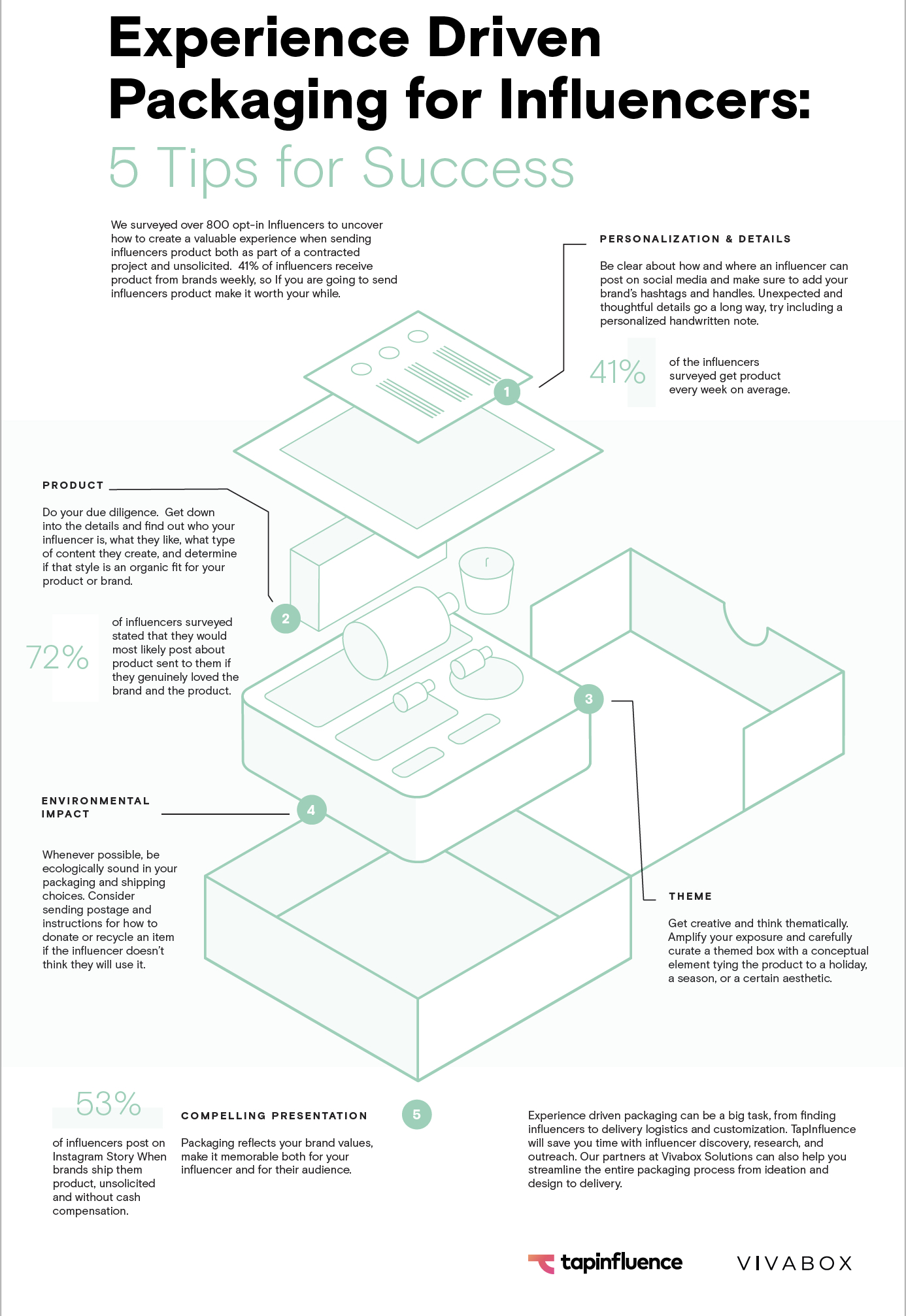
Looking for a solution? We can help.
Headquarters
9211 Corporate Blvd Ste 110
Rockville MD 20850
Satellite Offices
Dallas, TX
Paris, France
San Francisco, CA
Scottsdale, AZ
info@vivaboxsolutions.com
Phone
800-529-1988
Minimum Order Quantities:
RPET Totes: 3,000
Kraft Shoppers: 5,000
Rigid Boxes: 3,000
Folding Cartons: 5,000



